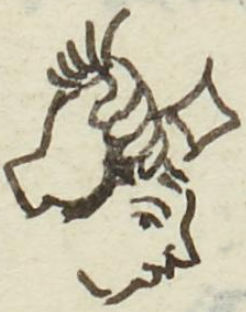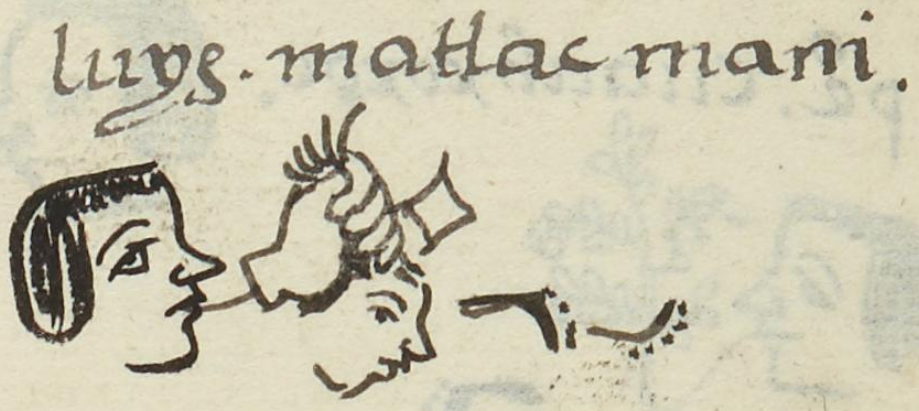Matlacmani (MH680v)
This black-line drawing of the simplex glyph for the personal name Matlacmani (“To Be Like Ten”) is attested here as a man’s name. The glyph shows a sign for the number ten (matlactli), which is a diamond shape. To the left of this notation is a hand (maitl), which provides a phonetic indication for the -mani end to the name. This hand is pulling the hair on the head of a man in profile, looking toward the viewer’s right.
Stephanie Wood
At least two other glyphs in this collection show a hand specifically pulling hair as a visual representation of the element -mani. The human hand can provide a phonetic indication for -ma or -man, but also, apparently, the two-syllable suffix -mani (to be in the manner of). See below. What is not clear is whether the hair-pulling in these cases adds an additional semantic dimensions.
Terminology related to the act of pulling hair includes words such as, Cocoliloc (MH591r), Cocol (MH608v), and Tecocohua (MH627v). What these have in common is “coco.” But there are additional terms to consider, too, such as Malcahuitl (MH785r), Tecualani (MH791r), and Tetolini (MH712v).
Stephanie Wood
luys. matlacmani.
Luis Matlacmani
1560
Jeff Haskett-Wood
números, diez, diamantes, tirar del pelo, manos, mahtlactli, nombres de hombres

matlac(tli), ten, https://nahuatl.wired-humanities.org/content/matlactli
-mani, to be in the manner of, https://nahuatl.wired-humanities.org/content/mani-1
ma(itl), hand, https://nahuatl.wired-humanities.org/content/maitl
Ser Como Diez
Stephanie Wood
Matrícula de Huexotzinco, folio 680v, World Digital Library, https://www.loc.gov/resource/gdcwdl.wdl_15282/?sp=441&st=image.
This manuscript is hosted by the Library of Congress and the World Digital Library; used here with the Creative Commons, “Attribution-NonCommercial-ShareAlike 3.0 License” (CC-BY-NC-SAq 3.0).






